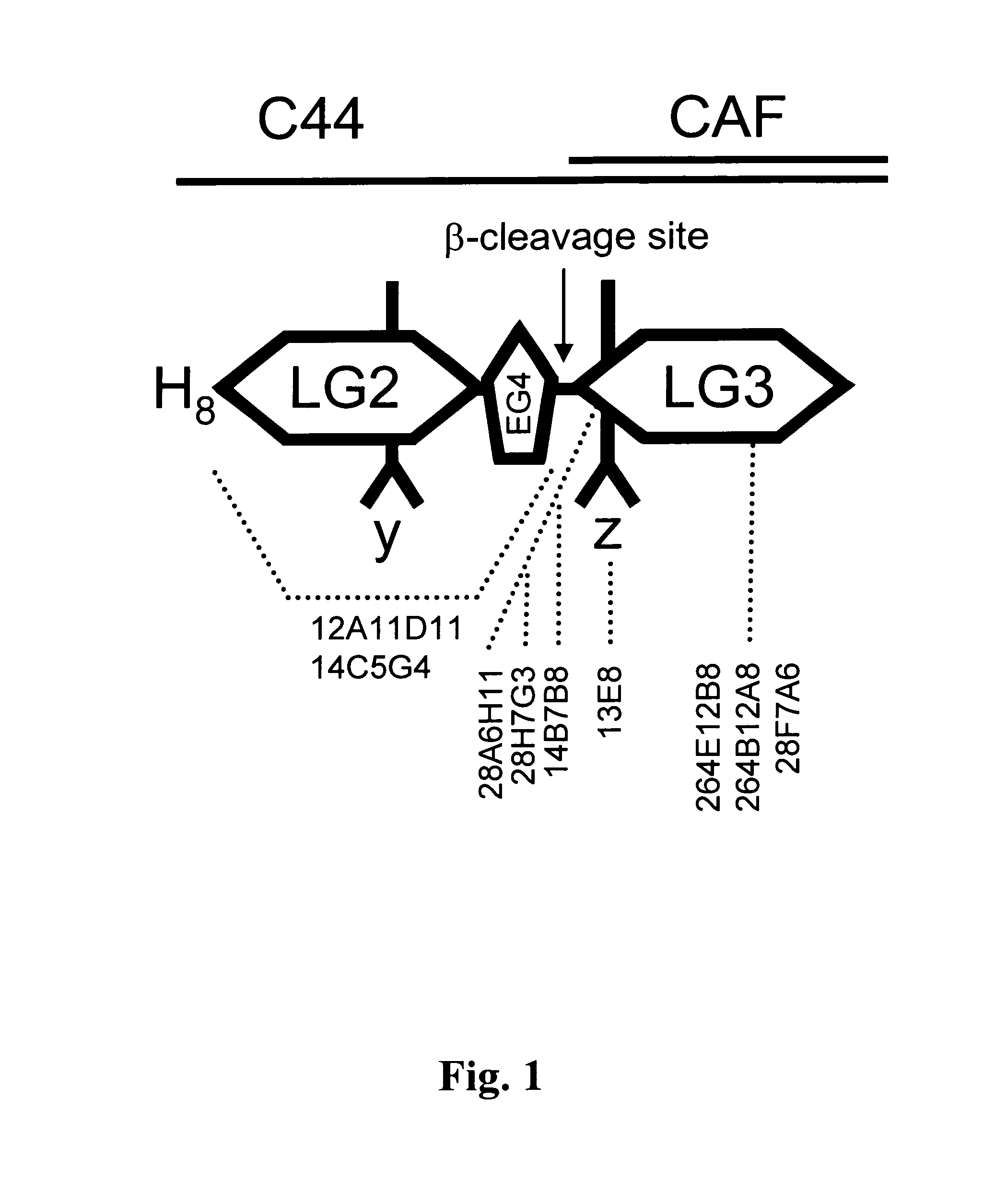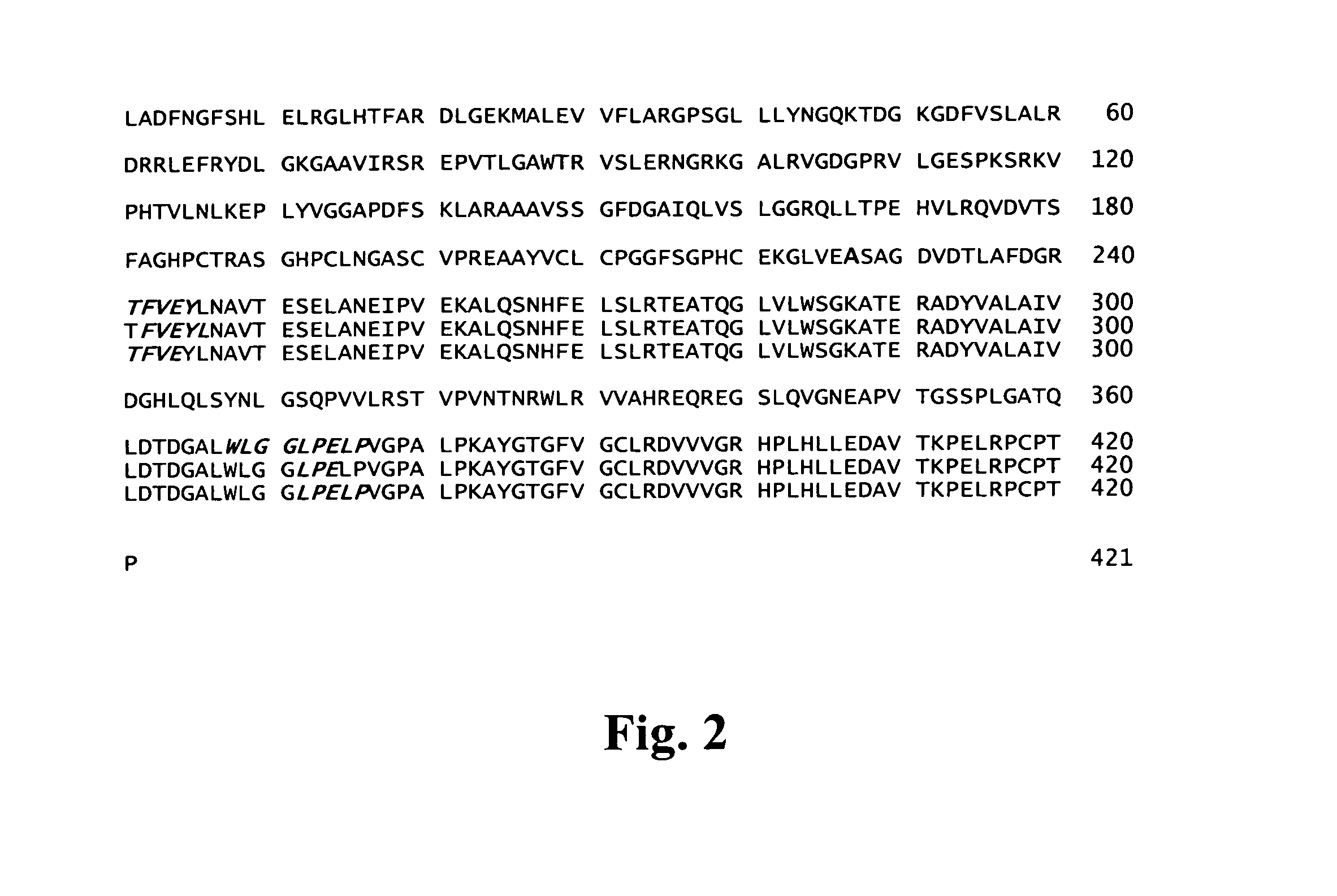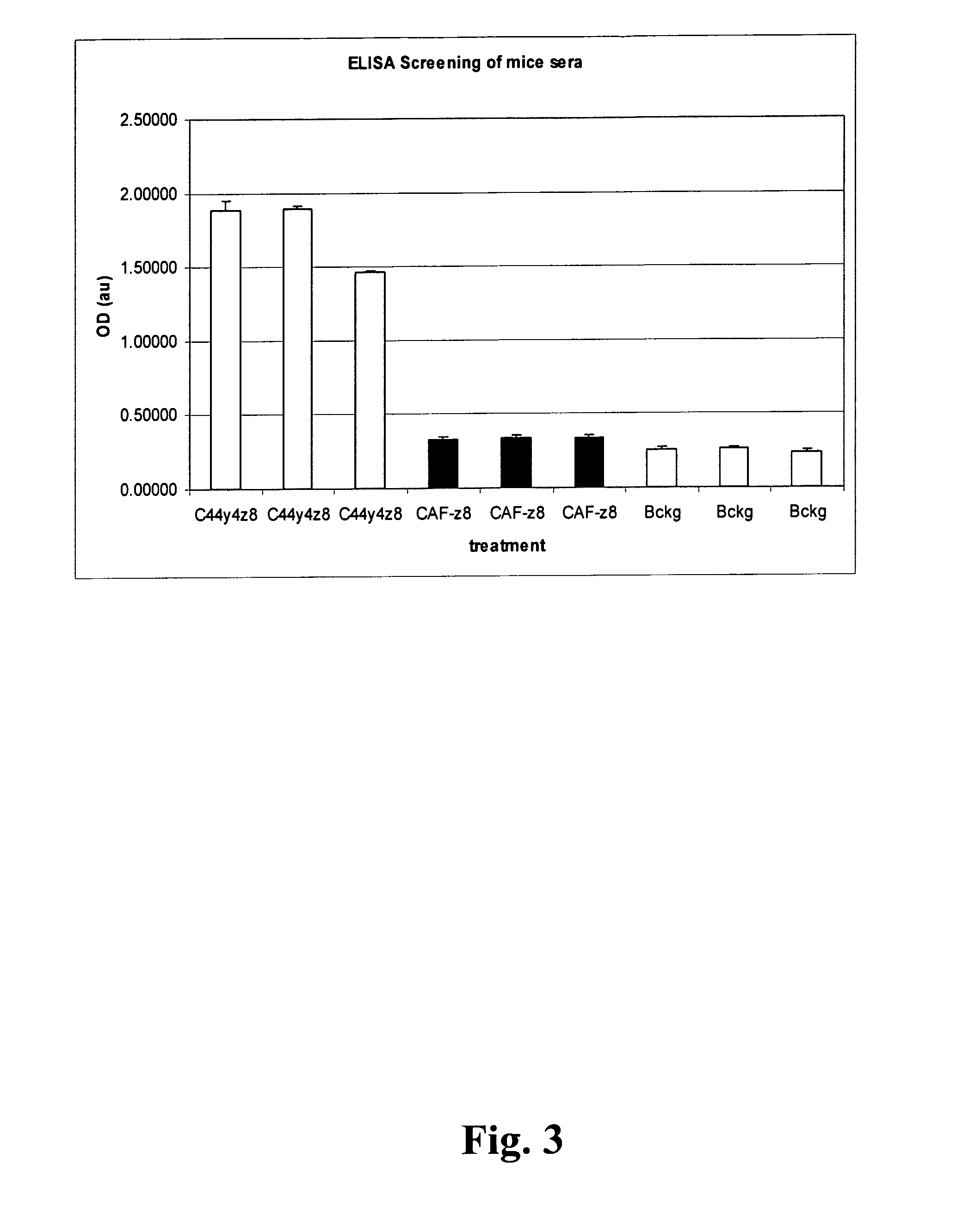Method for the production of hybridoma cell lines producing monoclonal antibodies capable to specifically binding to a human c44-fragment of agrin
a hybridoma cell line and c44-fragment technology, applied in the field of hybridoma cell line producing monoclonal antibodies against c44-fragment agrin, can solve the problems of inability to build proper nmj's, insufficient activation of lrp4 alone, and failure to achieve full in vivo activity of lrp4, so as to achieve the effect of improving immunological effect and immunological
- Summary
- Abstract
- Description
- Claims
- Application Information
AI Technical Summary
Benefits of technology
Problems solved by technology
Method used
Image
Examples
example 1
Cloning, Expression and Purification of C44K / A-y4z8
a) Cloning of Neurotrypsin-Resistant Human 44-kd C-Terminal Fragment of Agrin
[0075]Initially, full length human agrin y0z0 but lacking the N-terminal NtA domain (Human agrin y0z0 deltaNTA starts at position K156 in the protein sequence of accession number NP—940978) was cloned by PCR into the pEAK8 vector containing the coding sequence for the secretion signal of human calsyntenin-1, (Reif, Sales et al., 2007) via appropriate restriction sites and primers. As template for human agrin the vector pCMV-XL5-Agrin (purchased from Origene USA) was used.
[0076]In two subsequent steps, the corresponding codons required for the y4z8 insertions were introduced by site directed mutagenesis using standard techniques resulting in the pEAK8 vector containing full length human agrin y4z8 deltaNtA.
[0077]Using this vector as template, the gene coding for the 44-kd C-terminal fragment of human agrin was amplified introducing the coding region for a Hi...
example 2
Immunization of Mice with C44K / A-y4z8
[0084]Three 6-8 weeks old female Balb / c mice were immunized with 90-150 microgram of C44K / A in complete Freund's adjuvans. After 28 days, C44K / A was administered in incomplete Freund's adjuvance. This step was repeated after 56 days. After 87 days, C44K / A was administered in PBS, which was repeated at day 90. One day later, cells from the knee lymph knots were prepared and the resulting B-cells are fused with P3-X63-Ag8 mouse myeloma cells in the presence of PEG4000.
[0085]After completion of the cell fusion the cells were plated on 24-well plates which results in 360 oligo-clones consisting of 5-10 clones. Cells were cultivated for 10 days in selective Optimem medium (GIBCO) selecting for fused cells (hybridoma) only.
[0086]Supernatants were screened by ELISA for positivity. Single clones were generated by a two fold limited dilution. Positivity of the clones was checked by ELISA with C44K / A.
example 3
Expression and Purification of Monoclonal Antibodies
[0087]Hybridoma cells were adapted to serum free ISF-1 medium (BIOCHROME AG) and grown for 5-7 days. Approximately 100 ml conditioned medium was subjected to protein-G sepharose chromatography.
[0088]In brief, the conditioned supernatant was loaded on a 1 ml protein-G or protein-A sepharose column (GE-HEALTHCARE) with a flow rate of 1.5 ml / min. After washing with 30 column volumes (CV) with PBS / 0.5M glycine pH 7.4 the bound antibody is eluted with 100 mM citrate buffer pH 2.6. Positive fractions are pooled and neutralized by an appropriate amount of 2M Tris.
[0089]The purified antibody is dialysed against PBS and stored at 4° C. until further use of it.
PUM
 Login to View More
Login to View More Abstract
Description
Claims
Application Information
 Login to View More
Login to View More - R&D
- Intellectual Property
- Life Sciences
- Materials
- Tech Scout
- Unparalleled Data Quality
- Higher Quality Content
- 60% Fewer Hallucinations
Browse by: Latest US Patents, China's latest patents, Technical Efficacy Thesaurus, Application Domain, Technology Topic, Popular Technical Reports.
© 2025 PatSnap. All rights reserved.Legal|Privacy policy|Modern Slavery Act Transparency Statement|Sitemap|About US| Contact US: help@patsnap.com



